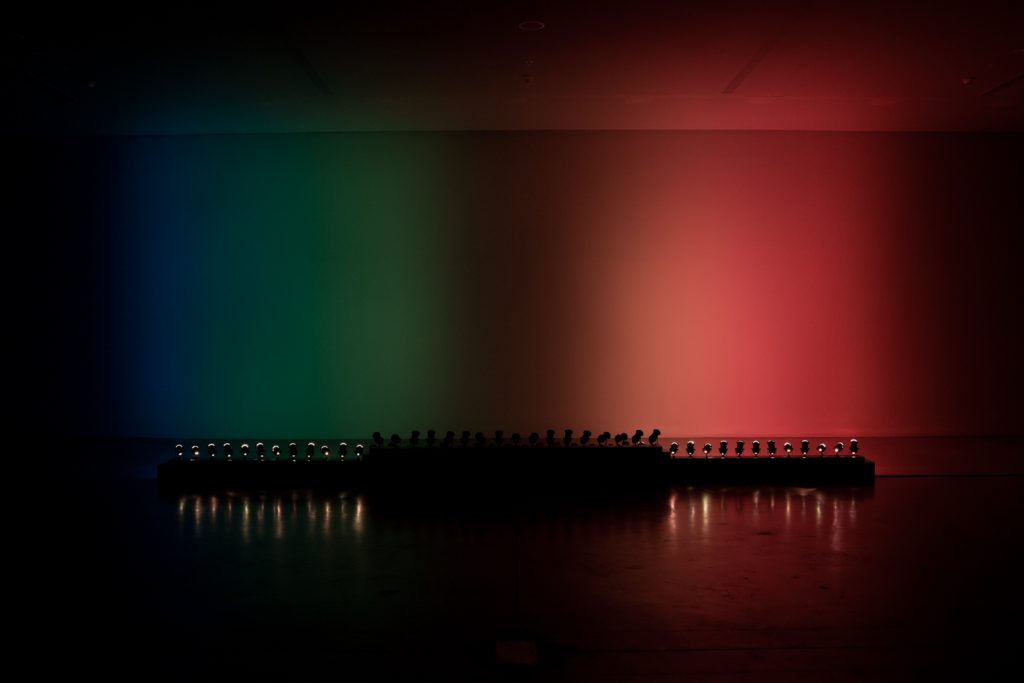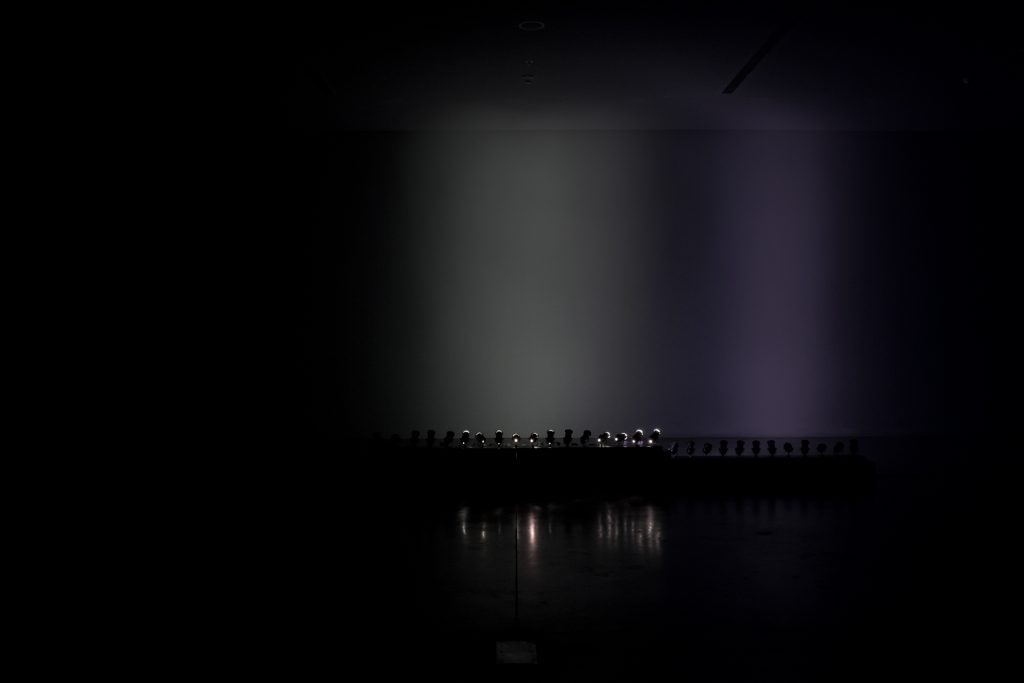The Air Will Take This Form materializes before one’s eyes to represent what might have seemed invisible: colour in its purest form (beyond lines, planes and limits) perceived as wave lengths and frequencies. Featuring poetic references to colour theory and abstract cinema, this installation pushes the eye into a gradual retinal adjustment to make such an encounter possible.
This project revisited two major works in the artist’s career: Espuma (Foam) and Todas las imágenes del mundo (All the Images in the World). Espuma, one of Peisajovich’s first light projects, was made in the year 2000 and marked a switch from painting on canvas to the modulation of space through colour and movement projected by light artefacts. The work is a composition of coloured circles in a nebulous state, constantly superimposed upon one another, with an overwhelming pictorial energy and imaginary universe fed by the theatre and early abstract cinema. Espuma is a first, subtle instigation towards the act of seeing in which the limits of form and colours become blurred. It disappears and reappears in a seductive motion; a perceptive compass that allows the eye to distinguish between two and three dimensions. Todas las imágenes del mundo is a project from 2006 that seeks conceptual synthesis; a new point of reflection after six years spent working with light. In contrast to Espuma and its centrifugal expansion, this work features centripetal concentration, forcing the eye to go still further as the low intensity light is so imperceptible that it blurs with the spots produced by the retina as it adjusts to the dark space. An anti-image in a limitless space which potentially has the capacity to draw out and project all the images trapped in one’s memory in an ephemeral and provocatively infinite apparition.
Karina Peisajovich (Buenos Aires, 1966) started to make art in the early nineties with a focus on painting which by the end of the decade had moved on to objects and light installations. She has won several awards, including the Premio a las Artes Visuales Fundación Andreani (2009), the Fulbright Grant given by the Fondo Nacional de las Artes and the Fulbright Commission (2002) and the Premio Konex a las Artes Visuales in the installation category, among others.







